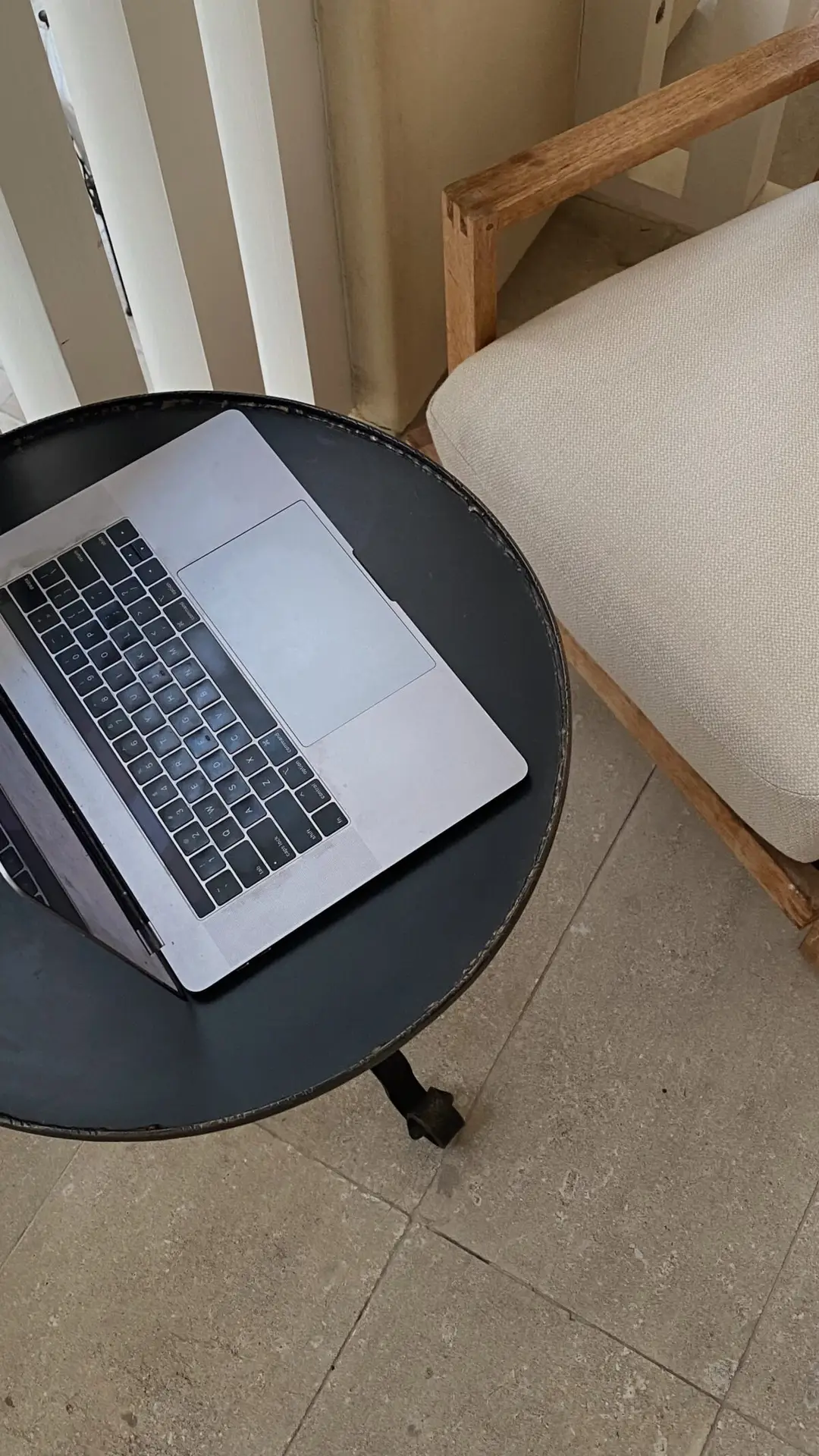
Why You Should Archive Your Email Newsletter (+ 2 Methods)
Ever feel like your emails disappear into the void immediately after hitting send?
You pour all this time and mental energy into crafting email newsletters that are truly valuable for your subscribers. But once they land in your subscribers’ inboxes?
*Poof.*
Hopefully they gets opened, and maybe even replied to, but after that? Gone. With no easy way to reshare them or let future subscribers read and get the value from them.
That’s where a newsletter archive comes in.
In this post, I’m breaking down what I mean by “newsletter archive,” and why you should (probably) archive your email newsletter. Because if you’re putting in the work to send out great content to inboxes week after week, we want to make sure this content KEEPS working for you after you press send.
The Two Types of Newsletter Archives
A newsletter archive, as the name suggests, is basically just a home where all of your past email newsletters live. But that can really mean one of two things:
- A private archive you keep just for yourself — an internal library to organize, reference, and repurpose your past emails. Example: I use Notion to archive my newsletters for internal referencing and so I can easily plan them out.
- A public archive that lives online for anyone to read — allowing subscribers to catch up and read old newsletters, and (potentially) bring in new traffic/subscribers via linkbacks and SEO. Example: I put all my email newsletters on Substack after sending them to my list — here’s the Sunny Sampler archive.
A private email archive is a no-brainer just to keep things organized. But you may have never considered a public one…and I just so happen to believe that a public newsletter archive is incredibly valuable if you’re writing and sending value-packed emails on the regular.
The short answer? If you’re sending newsletters 2x/month or more, you should absolutely consider a public newsletter archive.
If you’re already putting in the work to write great emails, a public archive gives all that great content a home. No more disappearing into the inbox void once it’s sent out. I’m all about making things easier for yourself, so if you could give your email content a second life, why NOT?
That said — if your emails contain private client info or behind-the-scenes stuff you don’t necessarily want made public, skip the archive.
But if your emails could serve as a discovery tool for new clients to find you, or to help your existing audience fall more in love with you? Archive. Your. Newsletter. (Pls, I’m begging you 🫶🏻)
5 Reasons Why You Should Archive Your Email Newsletter
1. So you can reference + link back to past emails
The more content you create — blogs, social media posts, newsletters — the more you’ll start to repeat similar topics/concepts or want to reference things you’ve already said.
But if your emails only live inside your email marketing platform, they’re not that easy to reference or link back to.
Using “preview email” links from your platform? Messy and potentially confusing for readers — especially if you’ve switched up your branding or newsletter format at some point.
With a public archive, all your newsletters live in the same place, with clean URLs that you can easily share. It makes it easier for you to search through your past content and is less confusing for your audience. Win-win.
2. To give people another reason to subscribe
Picture this: Someone posts that they’re sharing a juicy behind-the-scenes something in tomorrow’s newsletter at 7am. You’re intrigued. You click… but it’s noon and you missed it.
Unless that newsletter is publicly accessible, you’re SOL. You don’t get to read the thing that got you wanting to subscribe in the first place (rude)!
A newsletter archive lets you capture these curious lurkers — the people who are interested in reading one specific email you mentioned, or if they’re just nosy and want to poke through your content before deciding if they want to sign up.
I know you’re probably thinking… will people really still subscribe if they can read your past content without signing up?
The truth is, not everyone will. But if someone doesn’t subscribe to your newsletter after sampling your content, they probably weren’t going to be an engaged subscriber (or eventually buy from you) anyway.
Your ideal subscriber, on the other hand, will read one newsletter from you and subscribe because they want more.
3. So current subscribers can go back and read your old stuff
If you pour a lot of time into your newsletters to make them as valuable as possible, don’t let it go to waste. Make them bingeable!
When someone signs up for your email list, there’s a good chance they’ve already binged your content on Instagram, your blog, or your podcast — whatever else you have out there. If they like you enough to invite you into their inbox, they WANT to hear more.
A newsletter archive gives them the opportunity to read more from you right away without having to wait for your next scheduled newsletter to drop.
For subscribers that have been on your list for a while, it lets them catch-up or revisit something you said 3 weeks ago that stuck in their mind.
4. To strengthen your marketing funnel
Email is generally a mid-funnel marketing channel — because you first have to GET people to opt in *before* you can build trust or get them to buy from you.
But when your newsletters are publicly archived, they can also serve as top-of-funnel discovery content. They’re evergreen, shareable content assets that can build trust before someone ever even subscribes to your list.
Sending a regular newsletter + archiving it publicly is like getting two-for-one value out of every email you write.
5. To help *potentially* boost your SEO
Let’s be clear: a newsletter archive ≠ a blog. I’m a blog believer through and through — longform, optimized content still wins in terms of search value.
But if you just don’t have time to blog consistently, your archived newsletters can help fill in the gaps.
Especially if you host the archive on your website, give each newsletter an SEO-friendly title and URL, and format it properly for readability.
Google loves fresh content, and a regularly updated newsletter archive can show your website is active and regularly updated. And every newsletter you post can serve as an SEO bread trail back to your website and other content.
Two Methods to Make a Public Newsletter Archive
If discoverability and/or linkability is the goal, the best ways to archive your newsletter are:
Separate blog feed on your website
I recommend this if you’re writing longer newsletters AND want to make use of the website you’re already paying for.
Posting your newsletters directly on your site = more fresh content which Google loves = more SEO juice for you.
On most website platforms, you can create a second blog or “hidden” RSS feed that doesn’t show up on your main navigation. This way, you can reap SEO benefits from having your newsletter content on your website without it cluttering up your actual blog.
Think of your website as your online home — and a hidden RSS newsletter archive as a built-on addition that doesn’t compromise or change the main structure of your home.
Pros:
- SEO benefits
- Customizable design
- Cleaner URLs
Cons
- More setup required
- Might be limited/difficult depending on your website platform
Substack publication
If you don’t want to mess with your website, Substack is also a solid option for hosting your newsletter archive. (And I’m seeing a ton of creators use Substack for this lately)
Substack is free, easy to use, and visually appealing, making it a great place to store your past content. And if you already have a blog on your website with a lot of similar content to your newsletter, a Substack publication offers more separation for your newsletter content.
This option is more like building a shed in the backyard rather than building an addition onto your online home.
Pros
- Quick + easy setup
- Clean, aesthetic layout that’s great for browsing
- Built-in discoverability through the Substack platform
Cons
- Poor SEO indexing
- Clunkier URLs
- Costs $50 to connect a custom domain
One Last Note: Your Archive Doesn’t Have to Be Fancy!
If you want something quick and easy, you can absolutely keep it simple. I’ve seen people use simple Notion databases to host newsletter archives. I’ve also seen archives that are just a list of “preview” links from an email service provider.
But if you want a public-facing newsletter archive that’s easy to navigate and formatted to convert lurkers to subscribers? You’re in the right place.
Here’s how I can help:
→ Build a discoverable, evergreen archive for your newsletter
→ Maintain and update your newsletter archive every time you send a new email
Whether you’ve been sending consistent emails for yearsss or just started your email list literally yesterday, I can help you make sure your content doesn’t disappear into the inbox void. Inquire now to book my newsletter archival services!



